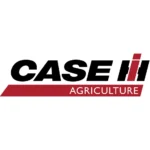| Vehicle Model | Year of Manufacture | Refrigerant Type | Refrigerant Quantity (g) | OE Compressor Oil Type | Compressor Oil Type | Oil Filling Quantity (ml) |
|---|---|---|---|---|---|---|
| Case/IH 1394 | - | R134a | 1450 | - | - | - |
| Case/IH 1494 / 1594 | - | R134a | 1580 | - | - | - |
| Case/IH 3220 / 3230 | - | R134a | 1800 | PAG 100 | PAG ISO 100 | 250 |
| Case/IH 4210 / 4220 / 4230 | - | R134a | 1800 | PAG 100 | PAG ISO 100 | 250 |
| Case/IH 5120 / 5130 / 5140 / 5150 | - | R134a | 1750 | PAG 100 | PAG ISO 100 | 270 |
| Case/IH 5220 / 5230 / 5240 / 5250 | - | R134a | 1750 | PAG 100 | PAG ISO 100 | 270 |
| Case/IH 7110 / 7120 / 7130 / 7140 | - | R134a | 1700 | PAG 100 | PAG ISO 100 | 270 |
| Case/IH 7210 / 7220 / 7230 / 7240 / 7250 | - | R134a | 1800 | PAG 100 | PAG ISO 100 | 270 |
| Case/IH 8910 / 8920 / 8930 / 8940 / 8950 | - | R134a | 1630 | PAG 100 | PAG ISO 100 | 230 |
| Case/IH 895 / 995 | - | R134a | 1580 | PAG 100 | PAG ISO 100 | 270 |
| Case/IH 9210 / 9230 / 9240 / 9250 / 9260 / 9270 / 9280 | - | R134a | 1630 | PAG 100 | PAG ISO 100 | 280 |
| Case/IH 9310 / 9330 / 9350 / 9370 / 9380 / 9390 | - | R134a | 1630 | PAG 100 | PAG ISO 100 | 280 |
| Case/IH CS 110-150 | - | R134a | 1500 | PAG 100 | PAG ISO 100 | 220 |
| Case/IH CS 78-94 design: Konvekta - straight hood | - | R134a | 1000 | PAG 100 | PAG ISO 100 | 210 |
| Case/IH CS 78-94 design: MCC - fitted on roof | - | R134a | 1100 | PAG 100 | PAG ISO 100 | 210 |
| Case/IH CS 78-94 design: MCC - integrated in roof | - | R134a | 1400 | PAG 100 | PAG ISO 100 | 220 |
| Case/IH CS 78-94 design: MCC - straight hood | - | R134a | 1200 | PAG 100 | PAG ISO 100 | 210 |
| Case/IH CS Pro/MT | - | R134a | 1000 | - | - | - |
| Case/IH CVX T1+T2 | - | R134a | 1500 | PAG 100 | PAG ISO 100 | 310 |
| Case/IH CVX T3 | - | R134a | 1400 | PAG 100 | PAG ISO 100 | 300 |
| Case/IH CX 50 / 60 / 70 / 80 / 90 / 100 | - | R134a | 1930 | PAG 100 | PAG ISO 100 | 250 |
| Case/IH Farmall U | - | R134a | 650 | PAG 100 | PAG ISO 100 | 60 |
| Case/IH Farmall U Pro | - | R134a | 650 | PAG 100 | PAG ISO 100 | 190 |
| Case/IH JX 60-95 | - | R134a | 1400 | PAG 100 | PAG ISO 100 | 190 |
| Case/IH JX-C | - | R134a | 800 | PAG 100 | PAG ISO 100 | 185 |
| Case/IH JX-N / JX-V | - | R134a | 750 | PAG 100 | PAG ISO 100 | 185 |
| Case/IH JXU | - | R134a | 1600 | PAG 100 | PAG ISO 100 | 190 |
| Case/IH Kompakt 300 / 400 | - | R134a | 800 | PAG 100 | PAG ISO 100 | 185 |
| Case/IH Kompakt 4000 | - | R134a | 1400 | - | - | - |
| Case/IH Magnum 71xx chassis no.: 50.000-64977 | - | R134a | 1800 | PAG 100 | PAG ISO 100 | 250 |
| Case/IH Magnum 72xx chassis no.: 64978- | - | R134a | 2040 | PAG 100 | PAG ISO 100 | 250 |
| Case/IH MX 100 / 110 / 120 / 135 / 150 / 170 | - | R134a | 1930 | PAG 100 | PAG ISO 100 | 250 |
| Case/IH MX 180 / 200 / 220 | - | R134a | 2100 | PAG 100 | PAG ISO 100 | 290 |
| Case/IH MX 80C / 90C / 100C | - | R134a | 1930 | PAG 100 | PAG ISO 100 | 250 |
| Case/IH MX Magnum 215-335 | - | R134a | 2100 | PAG 100 | PAG ISO 100 | 290 |
| Case/IH MXM | - | R134a | 1100 | PAG 100 | PAG ISO 100 | 210 |
| Case/IH MXU / Pro / Multicontroller / Maxxum / X-Line Engine 6-cylinder + 2-valve | - | R134a | 850 | PAG 100 | PAG ISO 100 | 210 |
| Case/IH MXU / Pro / Multicontroller / Maxxum / X-Line Engine: 4-cylinder + 2-valve | - | R134a | 1100 | PAG 100 | PAG ISO 100 | 210 |
| Case/IH MXU / Pro / Multicontroller / Maxxum / X-Line Engine: 4-valve | - | R134a | 850 | PAG 100 | PAG ISO 100 | 210 |
| Case/IH Optum | - | R134a | 1300 | PAG 100 | PAG ISO 100 | 200 |
| Case/IH Puma (T4B) | - | R134a | 1300 | PAG 100 | PAG ISO 100 | 200 |
| Case/IH Puma 115-155 | - | R134a | 1050 | PAG 100 | PAG ISO 100 | 210 |
| Case/IH Puma 115-210 | - | R134a | 1050 | PAG 100 | PAG ISO 100 | 210 |
| Case/IH Puma CVX (T4A) dryer in condenser | - | R134a | 1300 | PAG 100 | PAG ISO 100 | 210 |
| Case/IH Puma CVX (T4A) dryer in front of condenser | - | R134a | 1100 | PAG 100 | PAG ISO 100 | 210 |
| Case/IH Quantum C | - | R134a | 800 | PAG 100 | PAG ISO 100 | 180 |
| Case/IH Quantum N+V | - | R134a | 1200 | PAG 100 | PAG ISO 100 | 180 |
| Case/IH Steiger | - | R134a | 1900 | - | - | - |
Case/IH Refrigerant(freon) filling quantities
Disclaimer: The information provided on this site is compiled with care and to the best of our knowledge. However, we make no warranties or representations regarding the accuracy, completeness, or reliability of the data nor will we accept any responsibility for the consequences arising out of the usage of the information from these charts. Use this information at your own risk.
Links:
- Acceptable Refrigerants and their Impacts – https://www.epa.gov/mvac/acceptable-refrigerants-and-their-impacts

